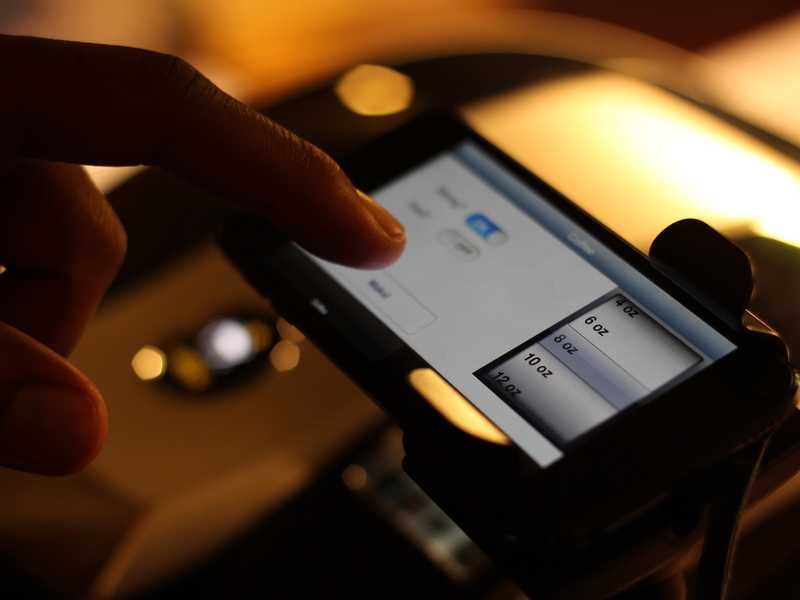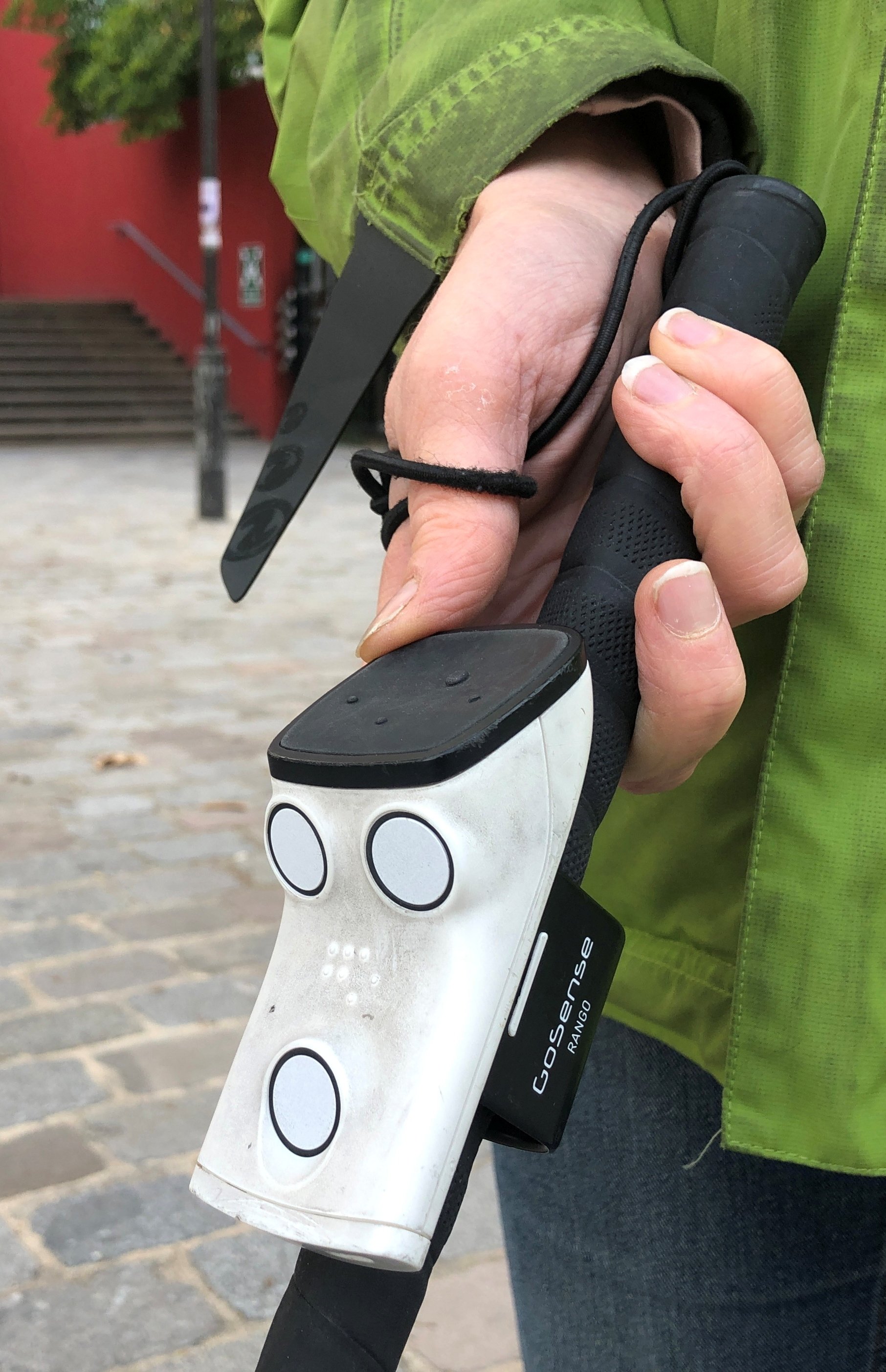Screen Readers for the Blind: Essential Solutions for Digital Access
Screen Readers for the Blind: Essential Solutions for Digital Access
Blog Article
Discover Cutting-edge Tools Designed for the Visually Impaired
The advancement of innovative devices for the visually damaged represents a significant advancement in access and self-reliance. Technologies such as clever glasses with AI capabilities and mobile applications developed to provide auditory descriptions are improving day-to-day experiences for customers.
Smart Glasses for Navigating

Smart glasses developed for navigation are revolutionizing the means visually damaged people interact with their atmosphere. These advanced gadgets make use of a mix of cam innovation, man-made intelligence, and acoustic feedback to supply real-time details concerning environments. By utilizing barrier detection systems, clever glasses can alert individuals to potential dangers, making it possible for safer flexibility in both acquainted and unknown setups.
The integration of GPS innovation even more enhances navigating abilities, allowing customers to receive auditory directions as they relocate. This hands-free strategy not just fosters freedom yet also encourages aesthetically impaired individuals to browse city landscapes with raised self-confidence. Furthermore, lots of wise glasses are geared up with features that determine spots and street indicators, offering contextual information that improves the user experience.
Furthermore, the advancement of these tools is continuously advancing, with business working to boost the precision of item acknowledgment and expand the variety of navigational features. As smart glasses come to be a lot more cost effective and accessible, they hold the prospective to substantially transform everyday life for aesthetically impaired individuals. Inevitably, these ingenious devices represent a crucial action toward inclusivity, offering improved mobility and a better feeling of autonomy for individuals browsing the globe around them.

Mobile Application for Daily Living
How can mobile applications enhance the lives of visually impaired individuals? Mobile applications are changing the way visually impaired individuals browse their atmospheres, handle everyday tasks, and accessibility details. These applications offer important support via various functionalities, fostering freedom and boosting lifestyle.
Numerous ingenious mobile apps are designed particularly for daily living. As an example, apps like Be My Eyes attach aesthetically damaged users with sighted volunteers through video calls, enabling them to receive real-time aid with jobs such as reading tags or browsing strange areas. Likewise, Seeing AI, developed by Microsoft, uses expert system to explain surroundings, checked out text, and determine items, efficiently changing a smartphone right into an effective device for everyday assistance.
Additionally, navigating applications tailored for the visually damaged, such as Aira and BlindSquare, supply audio-based directions and environmental information, making it possible for individuals to traverse their environments safely and with confidence. Beyond navigating and instant assistance, mobile applications also sustain organization and job administration, with features that assist users establish reminders, develop to-do listings, and track consultations. In summary, mobile applications serve as essential sources, equipping aesthetically impaired people to lead more independent and fulfilling lives.
Wearable Technologies for Aid
Empowerment with innovation is significantly evident in the realm of wearable gadgets created to help visually impaired people. These cutting-edge tools incorporate flawlessly right into every day life, improving navigating and offering necessary comments to customers. Clever glasses equipped with cams can acknowledge faces and check out text out loud, permitting customers to engage more confidently in social and professional setups.
Another notable development is the use of haptic feedback systems in wearable devices. These systems utilize resonances or other responsive signals to convey information about the customer's atmosphere, such as barriers or adjustments in terrain, improving mobility and safety. Wearable innovations likewise include wristbands that connect to smart devices, informing users to alerts with subtle vibrations, thus enhancing connection without reliance on aesthetic hints.
As these innovations remain to develop, they are not only boosting freedom for aesthetically impaired individuals yet additionally promoting a higher sense of incorporation in society. By bridging the void in between difficulties faced in day-to-day living and the capacity for autonomy, wearable innovations serve as critical tools in the pursuit for equal rights and empowerment for those with visual impairments.
Sound Summary Tools
Audio description devices play an important duty in enhancing accessibility for aesthetically impaired people, supplying them with the ability to involve with visual media. Assistive technology for the blind. These devices provide narrated summaries of key aesthetic elements in movies, television shows, and live efficiencies, guaranteeing that you can find out more customers can fully understand the context and emotions communicated with visuals
Sound description can be incorporated right into various platforms, including streaming services, movie theater screenings, single vision glasses and live cinema. Several popular streaming services now include audio description as an access feature, enabling viewers to select it quickly. Along with traditional media, specialized applications also exist, offering audio summaries for art events, galleries, and various other cultural occasions.
The performance of audio description hinges on the ability of the narrators, who should share aesthetic details succinctly without interfering with the original audio. Advancements in this field are likewise leading the way for even more individualized experiences, where individuals can change the level of detail and pacing according to their preferences.
Braille Innovations and Gadgets
Braille developments and devices have actually substantially transformed the method visually impaired people communicate with message and info. Modern innovations have brought about the advancement of versatile devices that enhance literacy and self-reliance amongst users. Especially, Braille display innovations have actually developed, permitting for dynamic reading experiences. These devices transform digital message right into Braille, enabling users to access a huge range of info on computer systems, smart devices, and tablets.
In addition, portable Braille notetakers combine traditional Braille input with modern-day capabilities, facilitating note-taking, scheduling, and paper modifying on the move. Wearable technology for low vision. These compact devices often include text-to-speech capabilities, connecting the space between Braille and auditory information
Additionally, innovative Braille printers have emerged, allowing customers to produce Braille tags, records, and academic materials efficiently. This availability fosters greater participation in instructional and specialist settings, ultimately advertising inclusivity.
Additionally, research right into wise Braille technologies remains to expand. Devices that integrate man-made intelligence are being discovered to offer real-time navigation help and contextual information, boosting the individual experience in varied settings. Overall, these advancements reflect a dedication to empowering aesthetically impaired people through modern technology, ensuring they can quickly access and involve with the world around them.

Conclusion
The development of ingenious tools for the visually damaged substantially enhances independence and lifestyle. Smart glasses, mobile applications, wearable modern technologies, audio description devices, and Braille advancements collectively encourage individuals by providing essential navigating support, environmental recognition, and enhanced analysis experiences. These innovations not only foster better addition but additionally promote freedom in everyday activities, inevitably contributing to an extra easily accessible and equitable culture for visually damaged individuals. Proceeded development in this area holds guarantee for more enhancements.
As wise glasses come to be a lot more affordable and easily accessible, they hold the prospective to dramatically transform day-to-day life for aesthetically damaged individuals. Mobile apps are revolutionizing the way aesthetically damaged individuals navigate their settings, manage everyday jobs, and accessibility information. Apps like Be My Eyes connect visually impaired individuals with sighted volunteers using video clip calls, allowing them to receive real-time support with jobs such as reviewing tags or navigating unknown areas.Furthermore, navigating applications customized for the visually impaired, such as Aira and BlindSquare, use audio-based instructions and environmental info, allowing individuals to traverse their surroundings safely and confidently.The development of innovative tools for the visually damaged significantly enhances visit our website independence and quality of life.
Report this page